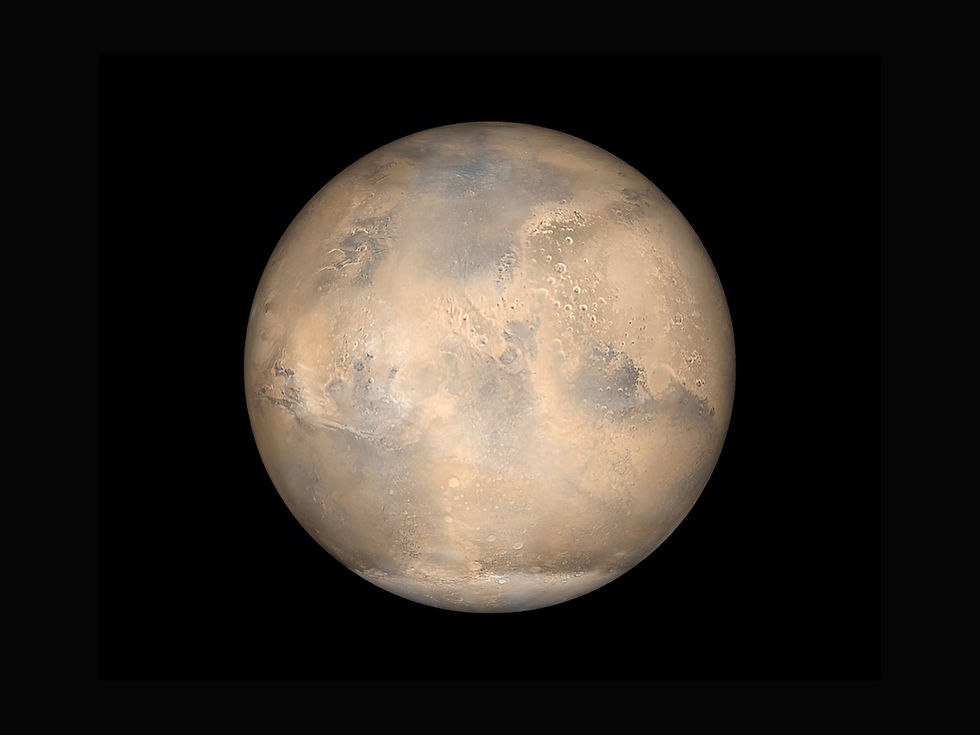
The Evolution of CGI
- Emanuel

- Mar 25, 2021
- 4 min read
Updated: Mar 30, 2021
CGI is a staple in the film industry. Over the years, it has been used to make some of the most electrifying, heart wrenching, awe inspiring movies and tv shows that people hold dear to them. From well known nostalgic films like Pixar’s Toy Story to Paramount’s blockbuster Sonic the Hedgehog movie, CGI has truly become a key tool for storytelling. But how did we get here? What allowed for CGI to have such a cultural impact? Where did it all begin?

MARS
Believe it or not, Mars is actually the reason why CGI is what it is right now. And no, this is not a conspiratorial blog post where I say that Martians are real and they came to Earth in the late 20th century and embedded a code into our brains that allowed us to figure out how to create CGI. The role Mars plays into the creation of it is far more simpler and almost as intriguing. Almost.
Back in 1964, NASA launched the Mariner 4 to perform the first flyby of Mars. It was truly an exciting day in the science field, and for humanity, as another monumental achievement in history was taking place. What came out of that was a successful launch and mission as Mariner 4 completed a closeup observation of Mars. But the cultural impact that the mission attained came from the first closeup images of Mars that were captured. Specifically, the method used to send said images back to NASA.
For us to even get our first images of Mars, Mariner 4 transmitted the images of the planet back to NASA as numbers. Sending 240,000 bits of binary code which represented the shading of 40,000 dots used to construct the first picture. With this, a set of computers is used to transcribe the information from these numbers into the pictures that gave us our first glimpse of the terrain of Mars. In doing so, the mission accomplished two additional feats. For one, it helped pioneer digital pictures, specifically what they should like. And it also fostered the technical guidance needed to perform the CGI skillfully used in a cinematography masterpiece that has had immense influence in the film industry.

Westworld (1973)
Westworld’s incorporation of android POV was successful due to the blueprint the Mars pictures laid out. In the 1973 cover story American Cinematographer, Westworld designer John Whitney Jr. explained how the “scanning-digitizing methods employed by Jet Propulsion Laboratory on their Mariner Mars flybys could be used here.” Unfortunately, to do so required a hefty sum of $100,000. And that was just for a mere two and a half minutes of motion picture film.
Thankfully, they were able to hire a private company that was able to imitate Propulsion Labs methods by scanning the footage frame by frame, converting it into numbers, and playing it back on another machine where it was re-recorded. The designers then used data to create an image with 3600 squares that visualized the android POV in the film. And to make sure that the action captured in CGI came through clearly, they made the actors wear clothing that contrasted the background. Then there was post production where they increased the contrast of the images.
All in all, it was a very long, tedious process that production went through. From having to sit through 60 seconds for each single frame that needed to be scanned, agonizing for up to 8 hours to get a simple 10 second sequence, it was truly a grueling task to endure. But it was all worth it as it cultivated a cultural moment in Westworld, the first film to use CGI.

The Life of CGI
The Westworld universe continued to be pivotal in the evolution of CGI. Later on, Futureworld (1976) became another first in the cinema world as it was the first movie to use 3D wireframe imagery. From then on, money was pumped into researching and further developing CGI. This led to innovative techniques such as image rendering and valuable software like Tween (animation program), SoftCel (animation program), and Paint (paint program). All of which were created at the New York Institute of Technology. And this was just the beginning as further tools continued to be made in order to enhance CGI.
Motion control photography was another technique founded. A technique using a computer to record the precise motion of a film camera for during a shot, in order to duplicate the motion again and combine it with movements from other sources. An ability used later on in George Lucas’s Star Wars Episode IV: A New Hope (1977).
Then there’s CAPS, or the Computer Animation Production System. A digital ink and paint system that’s used in animated feature films. Disney’s Beauty and the Beast being a perfect demonstration of the system’s prowess.
In addition to all of that, there’s also the use of real-time rendering to create realistic or uniquely stunning characters and/or visuals. A technique that has grown in usage exponentially within the game development world.

CGI’s Impact
The use of CGI has truly transformed the culture in the film industry. It has paved the way for a variety of stories to be told for audiences to witness. From creating characters that hold nostalgia for viewers to providing visually stunning scenes that capture our breath. CGI has helped expand the avenue for creative kid movies while simultaneously allowing for the innovativeness that comes from sci-fi to flourish on screen. A keystone tool that fundamentally changed the way of storytelling.









Comments